Rhubarb is a perennial vegetable plant, grown for its remarkable edible pink stems, with a tangy flavour. Additionally, its large leaves are highly decorative in the garden. Hardy, it is very easy to grow in fresh, fertile soil. This stem vegetable is ideal for making desserts, such as delicious tarts, compote, preserves, and homemade jam. Discover our recipe for a delightful rhubarb jam that will tantalise the taste buds of young and old alike.
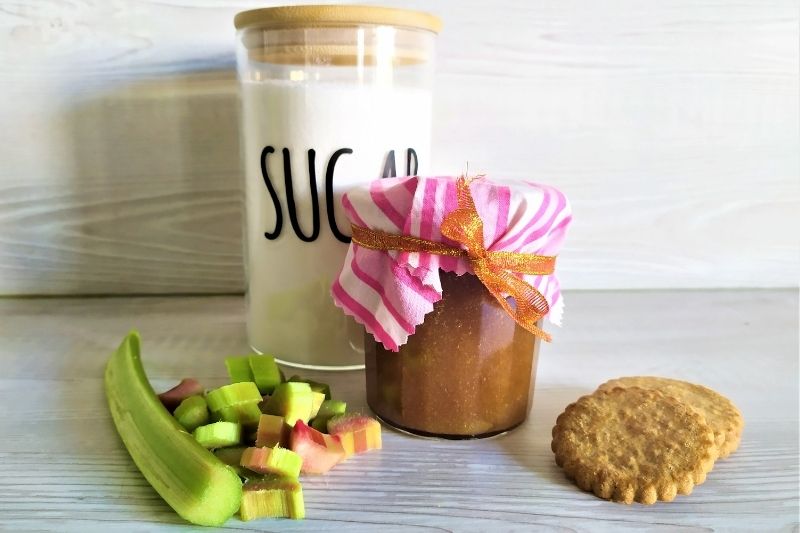
When, How, and Where to Harvest Rhubarb?
When to Harvest Rhubarb?
Rhubarb harvest begins in May-June and continues until September, sometimes even October. If you've just planted it in your garden, wait until the second year to harvest.
How to Harvest Rhubarb?
- Choose firm stems;
- Use a knife to cut the stem at its base;
- Always leave 1/3 of the stems on the plant so it can regenerate;
- Remove the leaves.
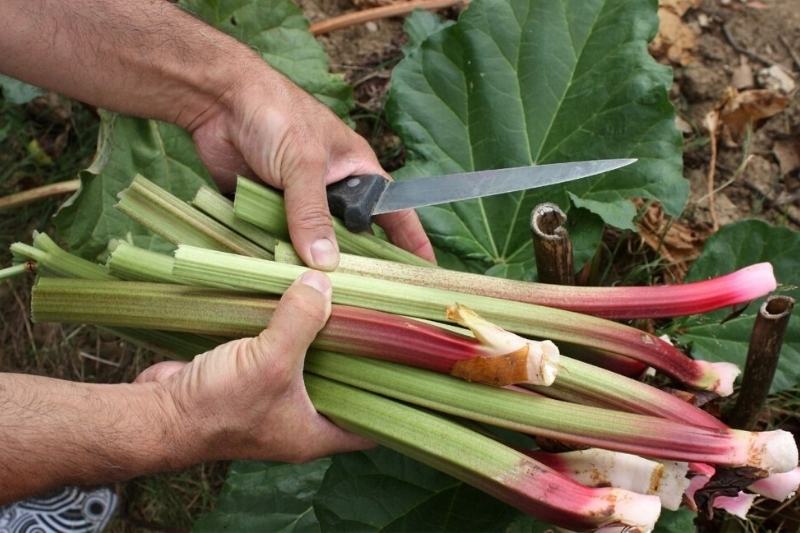
Important: Rhubarb leaves are not edible. They are rich in oxalic acid, which can be toxic if ingested. However, you can add them to your compost or make rhubarb liquid manure, an excellent repellent.
Finally, we advise removing the flower stems as soon as they appear. This prevents your rhubarb plant from exhausting itself unnecessarily.
Which Rhubarb Varieties to Choose?
Choose a vegetable rhubarb variety, from the genus Rheum, belonging to the Polygonaceae family. They are easily recognised by their large green leaves and, most notably, their red stems. Only harvest untreated rhubarb stems.
Here’s a small selection of our favourite varieties:
- The ribbed rhubarb, also known by the charming name "garden rhubarb," produces large, vibrant green and pink stems. It is the most common variety in our gardens, with a tangy taste. Very hardy, it can reach 1 to 1.5 metres in spread. This variety is also available in organic.
- The 'Livingstone Red' rhubarb offers beautiful bright red stems. This variety, reaching 1 to 1.5 metres in spread, is low in fibre, tangy, and early.
- If you prefer a shorter rhubarb variety, the 'Fulton's Strawberry Surprise' is perfect for you, standing at just 60 cm tall. It also has the unique feature of being suitable for both ground and container cultivation.
- The 'Canada Red' rhubarb offers stems of a beautiful red colour, low in fibre and rather sweet.
- The 'Raspberry Red' rhubarb is an early variety that develops large red stems, tinged with green. Its taste is rather sweet, perfect for making compotes.
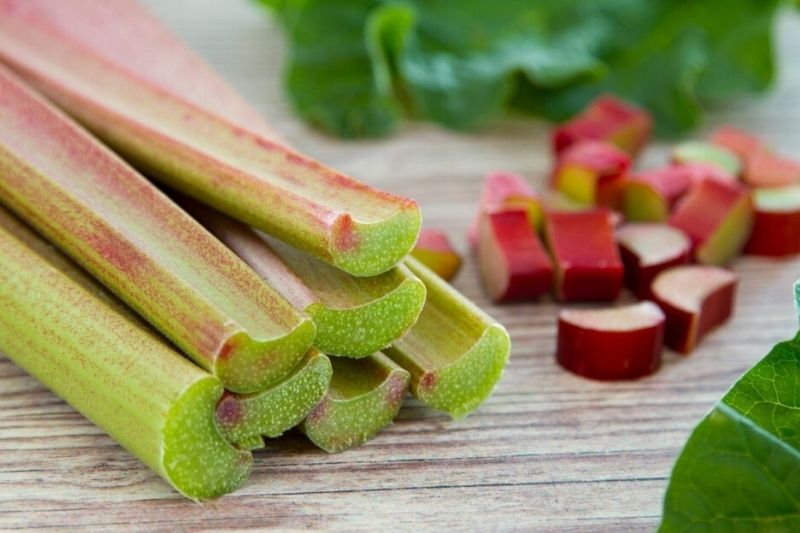
The stems of ribbed rhubarb
Rhubarb Jam Recipe
Ingredients:
- 1 kilo of rhubarb
- 1 kilo of white sugar, jam sugar, or granulated sugar
- Optional:
- 1 organic lemon or 5 cl of lemon juice
- 1 sachet of vanilla sugar or 1 vanilla pod
Cooking Time:
30 minutes
Recipe:
Before starting, remember to sterilise your jars.
- 1/ Remove the leaves and the base of the stem
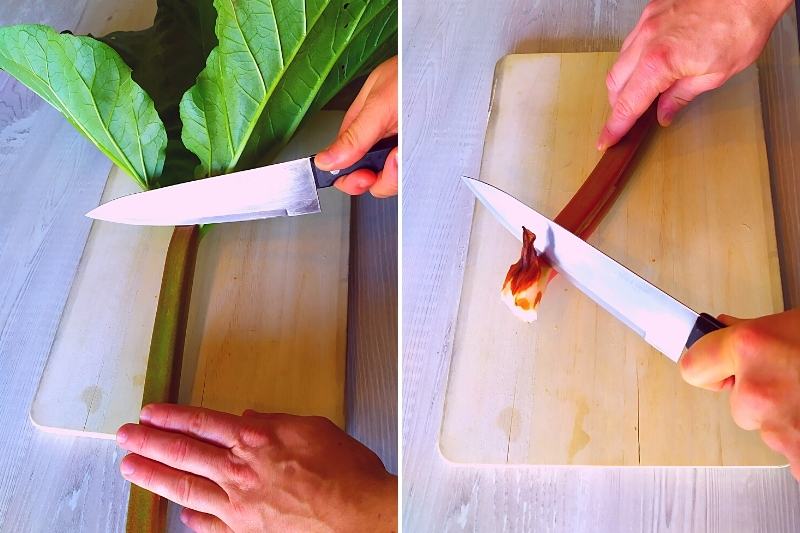
- 2/ Wash your rhubarb sticks in cold water, then dry them
- 3/ You can peel or trim the stems to make them less fibrous
- 4/ Using a knife, cut the sticks into small pieces
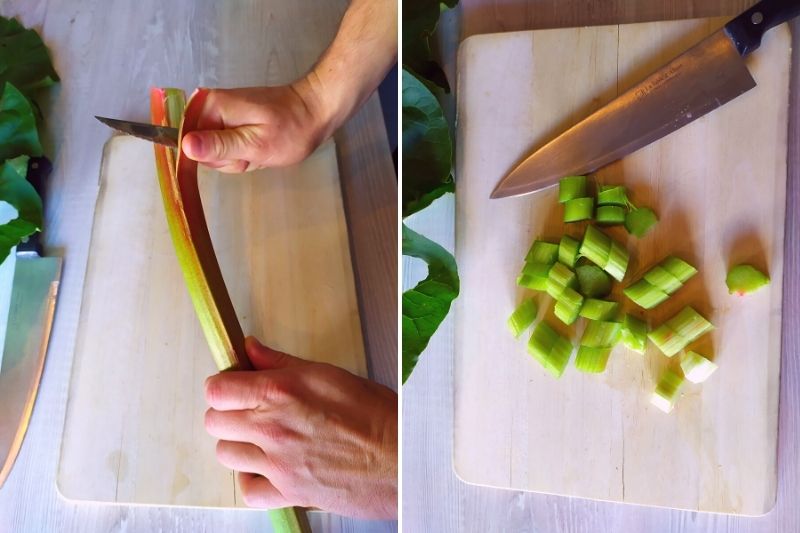
- 5/ In a pot, saucepan, or jam pan, mix your rhubarb pieces with the powdered sugar. You can optionally add lemon juice, vanilla sugar, or a split vanilla pod.

- 6/ Bring to a boil, then simmer on low heat for 30 minutes, stirring occasionally with a wooden spoon. If your sugar contains gelling agent, reduce the cooking time to 10 minutes. Regularly skim off the foam from the surface with a skimmer.
- 7/ To check the consistency of your jam, pour a few drops onto a cold plate and place it in the fridge. After 2 minutes, remove the plate and tilt it: if the jam flows too quickly, let it cook for another 5 minutes. Repeat until the jam flows slowly from the plate.
- 8/ Using a ladle, immediately pour your jam into pre-sterilised jars. Fill the jars to the brim, seal them with their lids, and immediately turn them upside down with a cloth. Let the jars cool at room temperature.
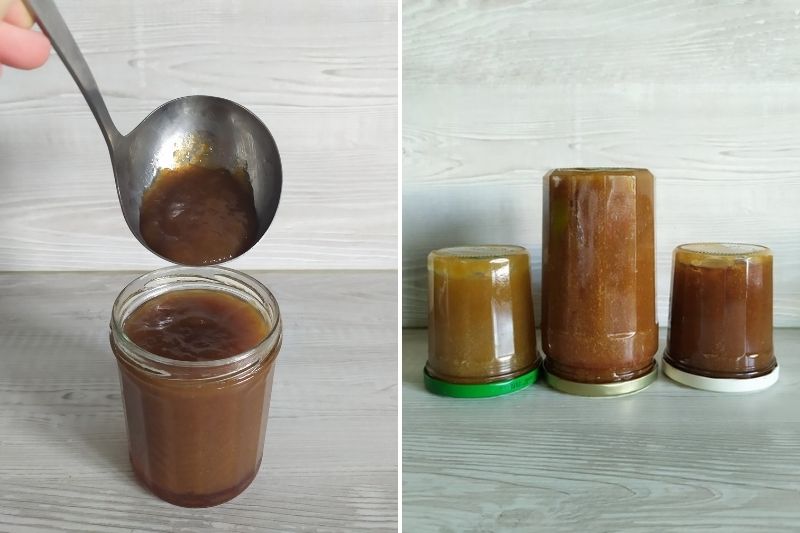
- 9/ Store them in a room away from light and temperature fluctuations.
- 10/ Once opened, keep your jam jar in the fridge.
My Tip: To avoid the jam being too fibrous, you can blend it just before the end of cooking.
Recipe Ideas: You can pair rhubarb with banana, mint, apple, raspberries, or strawberries to vary your jam recipes.
The Benefits of Rhubarb
Originating from Asia, rhubarb was already cultivated 5000 years ago as a medicinal plant. It is said to contain vitamin C and minerals such as phosphorus, potassium, magnesium, and calcium.
To Go Further:
-
- Check out our guide to learn everything about rhubarb: planting, growing, harvesting
- Fancy planting a beautiful rhubarb in your garden? Discover all our rhubarb varieties
- Did you know you can make rhubarb liquid manure with the leaves? Learn how to make rhubarb liquid manure
- Growing rhubarb is easy! Find all our tips.































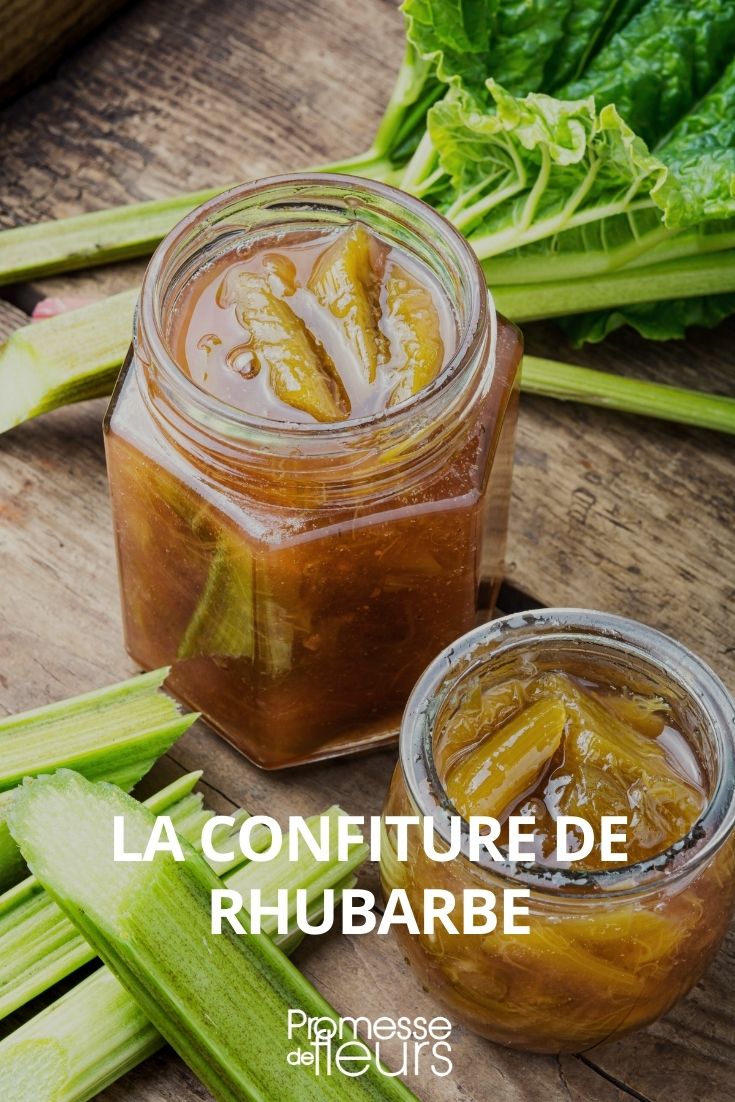
Comments